March 18, 2015 Auroras
Wabana, Pughole, and Prairie Lakes
The geomagnetic storm that began during the previous night intensified during the day, and the Kp index reached a value of 8 for several consecutive three-hour periods, making this the strongest geomagnetic storm of Solar Cycle 24. Bz had been south, with values between -15 and -20 nT all day, and if these values persisted into the evening, the sky would be filled with auroras with the main auroral oval being directly overhead of even slightly to the south. Chances are that the strong south values of Bz do not last very long, but in the wake of coronal mass ejections, Bz often settles into a persistent, steady value, and today, that value was strongly south. As evening approached, I was increasingly confident that we would see auroras.
As it happened, just when I thought Bz would stay near -20 nT into the night, it rather quickly went back to a more neutral value around -3 nT. That doesn't mean the auroras will instantly disappear. In my experience, it takes a couple hours or more for that to happen, and we had less than two hours until it was dark enough to see auroras. I decided to initially set up a camera on Wabana Lake, pointing the camera to the northeast where I could hedge between an aurora arc directly overhead and one that might be closer to the northern horizon.
I started a timelapse to record the transition from daylight to nighttime with auroras, but I did not know exactly what sort of state the auroral oval was in. As the first stars began to appear, we started to see some faint columns to the north. As the skies continued to darken, the contrast on these columns became much sharper, and a smoother, flat green auroral band revealed itself much higher in the sky with its southern edge nearly directly overhead. I suppose I could have kept the camera pointed northeast where I had it, but more of the structure was to the north, so I pointed that way.
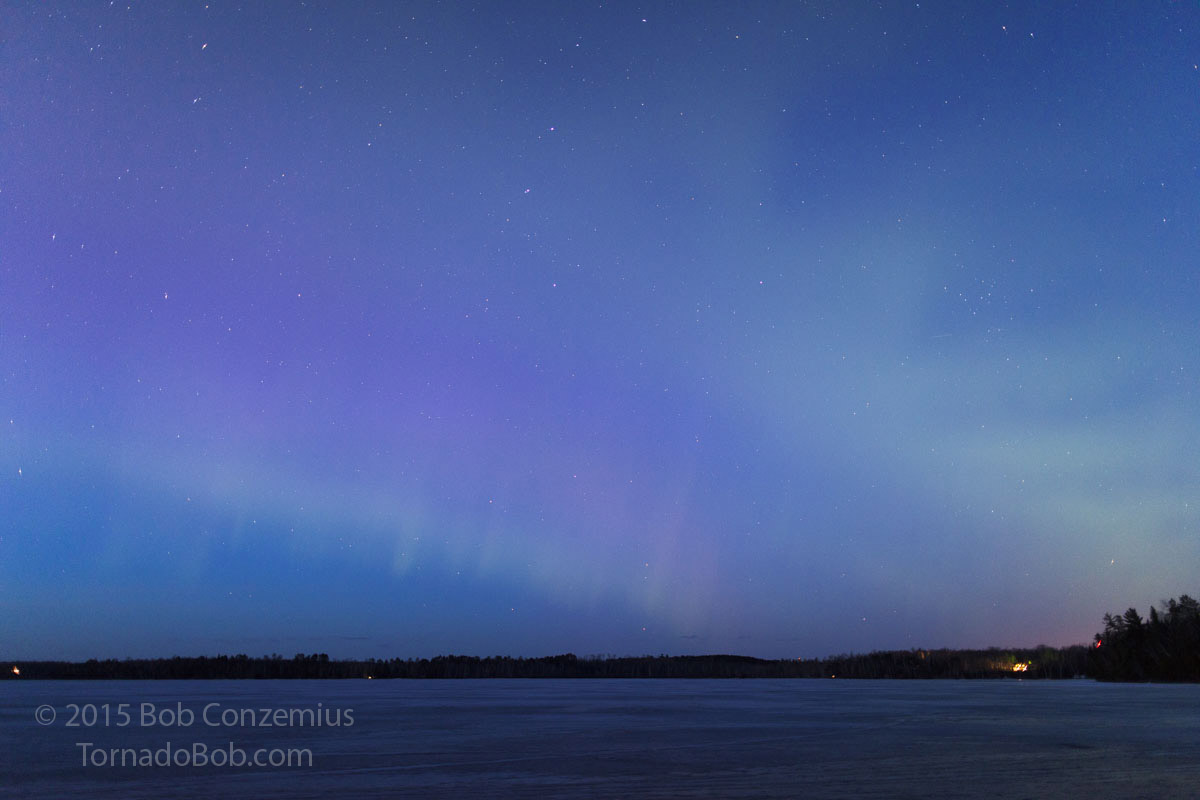 |
| The auroras start to appear as light fades to darkness on Wabana Lake. |
The auroras danced from the first darkness for about the next hour or so before the effects of the more neutral Bz took hold, and the auroras began to retreat to the northern horizon. Before that happened, they presented a lot of multi-colored columns, and as far as colors go, this display was about as diverse as any I've seen. There were translating columns of green, magenta, pink, and purple while a flatter green held steady overhead. The brightest auroras appeared around 9:25 PM, and I had to adjust the exposure settings quite a bit, droping the exposure times to a third of their previous value.
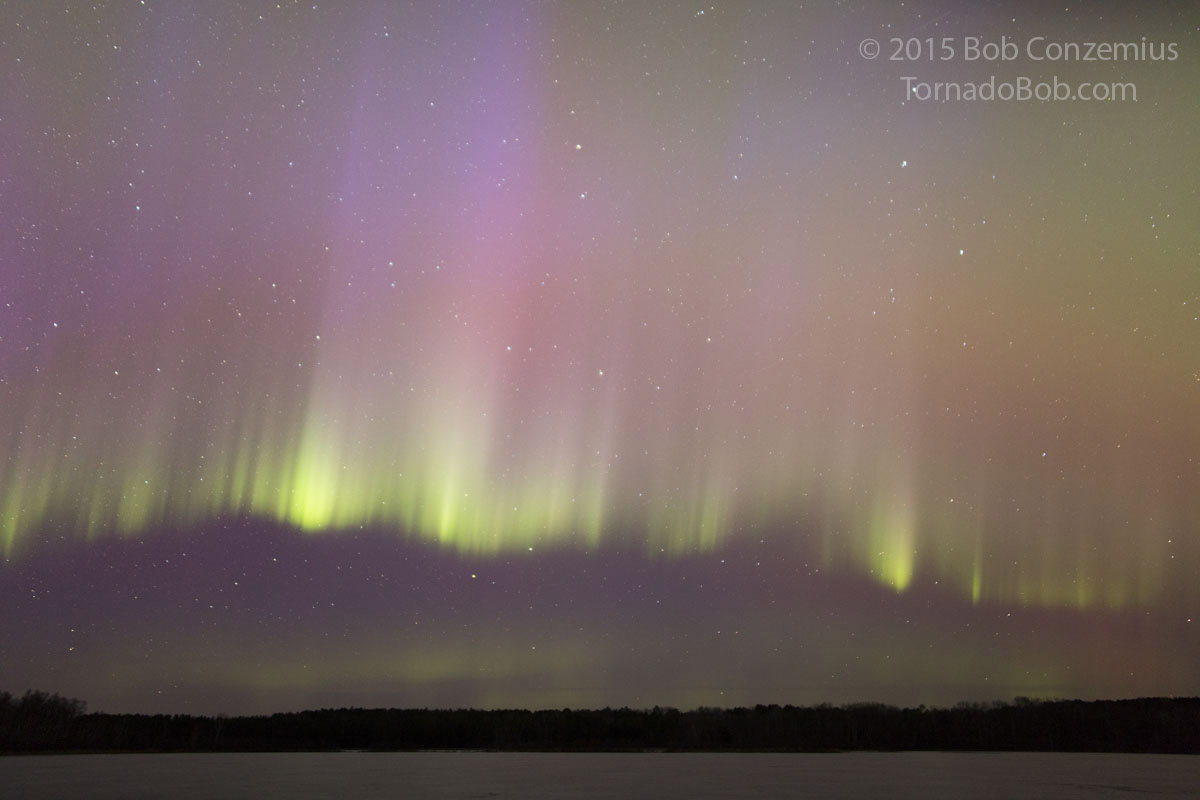 |
| Multi-colored columns of aurora over Pughole Lake. |
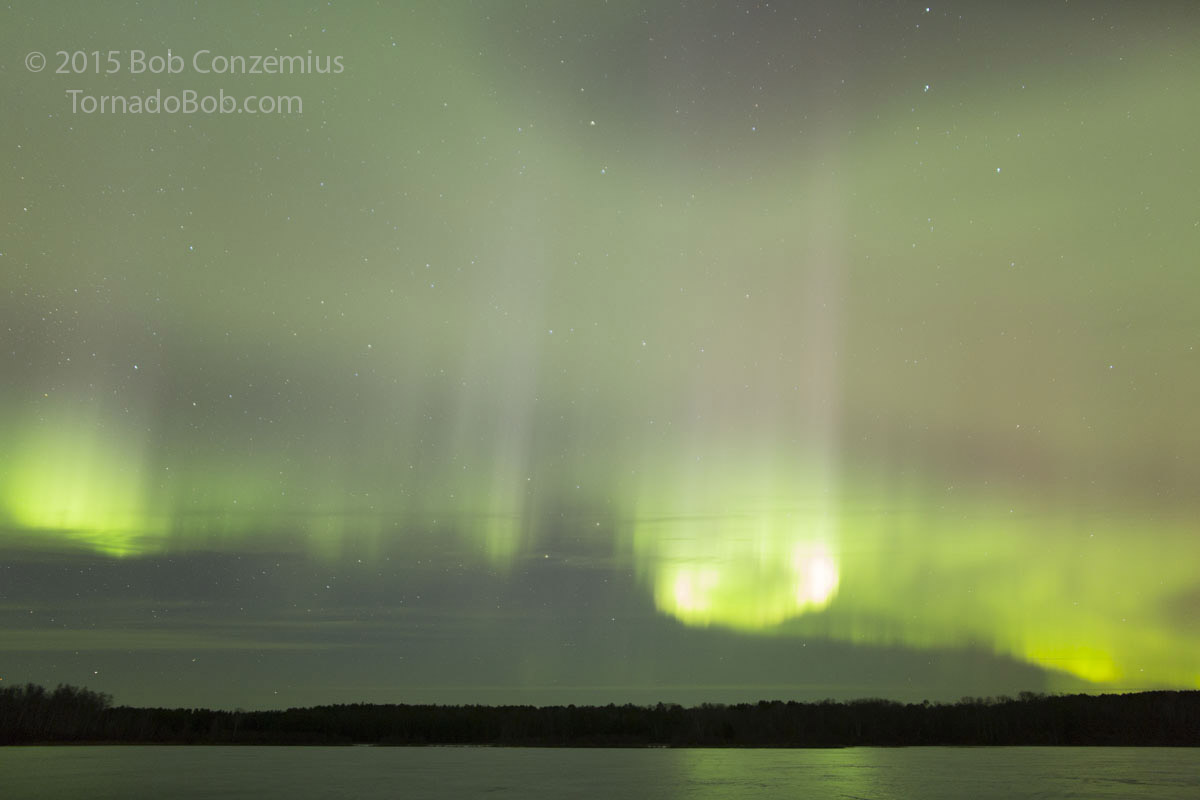 |
| Wow! I'm overexposed! Quicken the shutter speed! |
 |
| That's better! |
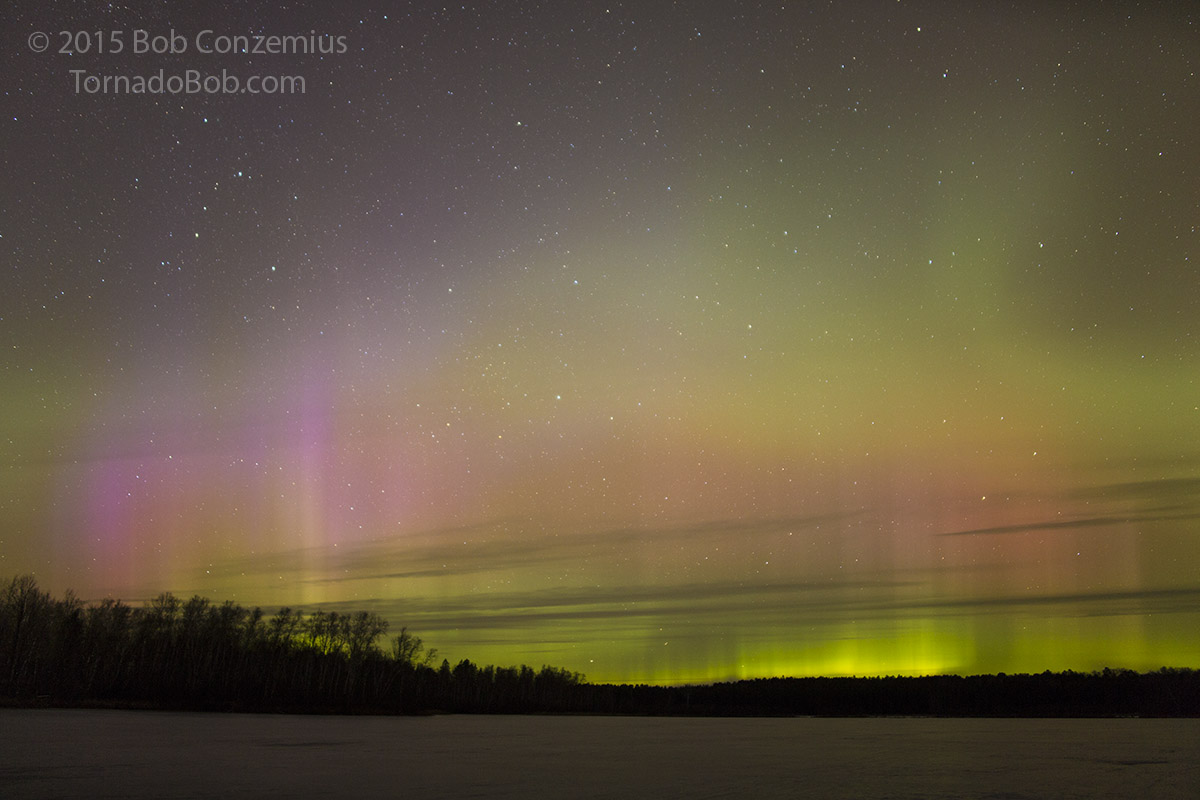 |
| The structure has retreated to the northern horizon while coloring remains higher in the sky. |
Meanwhile, while I was on Pughole Lake, a few other people started to appear, having seen the auroras on their drive or hearing about it on KAXE, where I had just given a report on what was going on. It is a rare occasion when people just show up to view the auroras. At least, it is around here.
When the show had faded, I started back south but held up at Prairie Lake to meet somebody there and shoot with them for a bit. By the time I was done, it was after midnight, which doesn't sound all that bad, but I needed some sleep after the previous night. Here it is, more than two weeks later, and I'm still writing up the account.
 |
| A little closer to town, on Prairie Lake, the structure starts to brighten up again. |
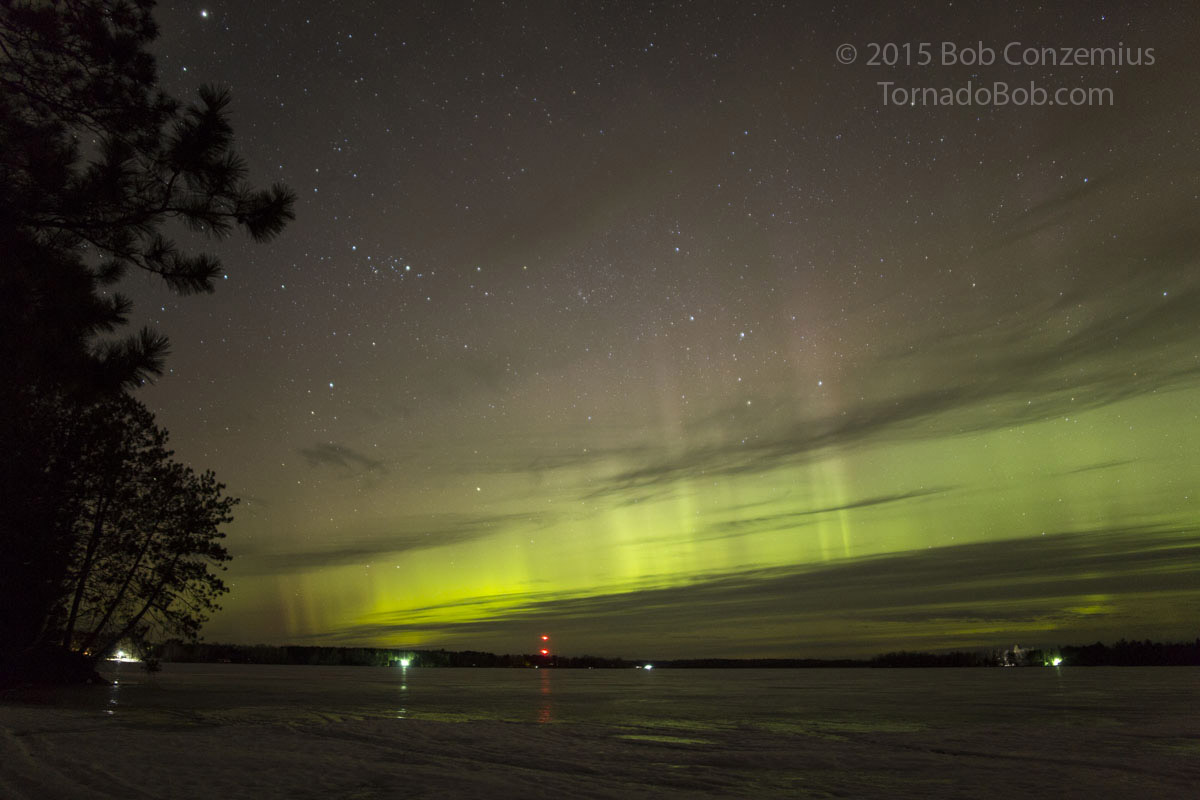 |
| I like this angle on the tree. |
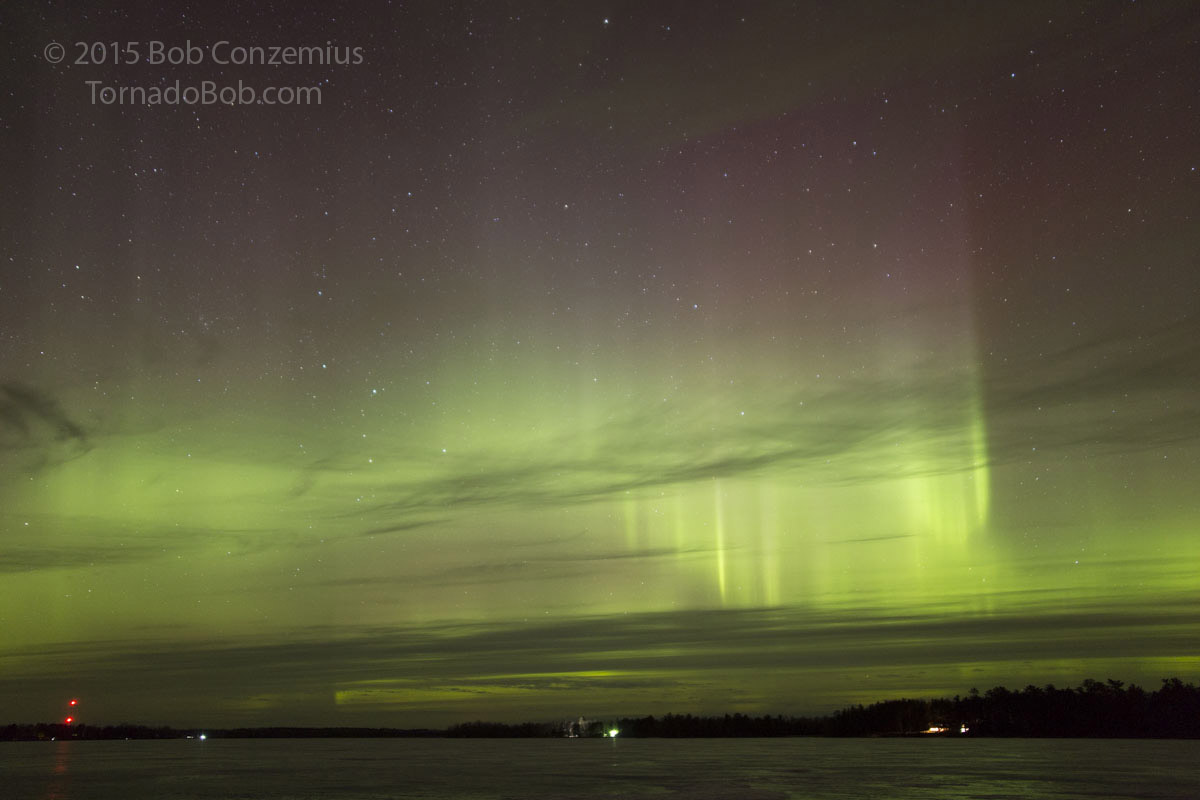 |
| The peak of the second substorm of the evening, looking north. |
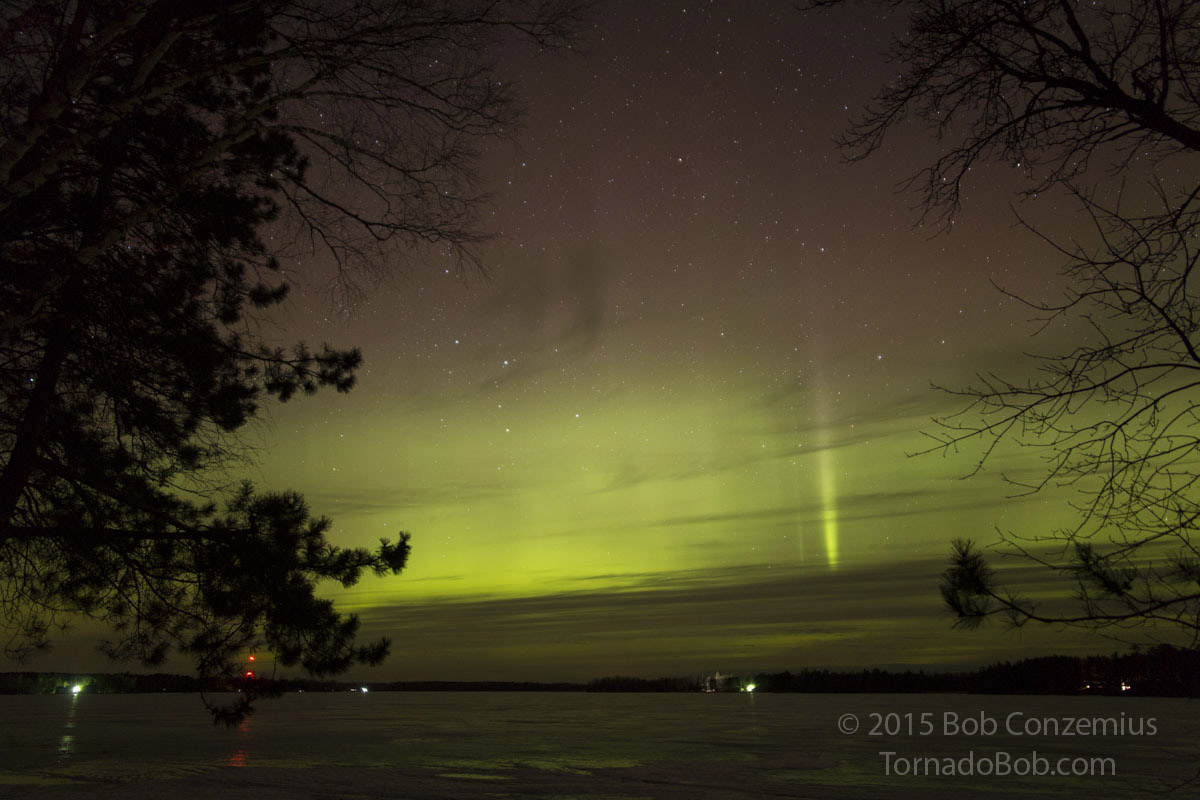 |
| The peak of the second substorm of the evening, looking north. |
Back to Auroras | Home
